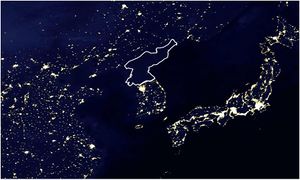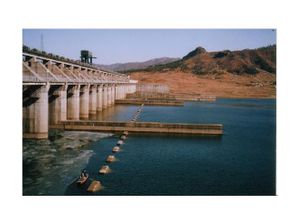
Renewable Energy Act
The Act consists of six chapters and 46 clauses. These are a few of the most important components:
- Definition and mission of renewable energy
- Research and development of renewable energy resources
- Basic principles in the usage
- Planning and encouraging the development of renewable energy
- Enforcement of the materials and technical sectors of renewable energy
- Legal requirements to guide the renewable energy sector projects.[1]
Mission of the law
The mission of the law is to encourage the development and use of renewable energy and stimulate the renewable energy industry by enabling the sustainable development of the economy and improve people's living standards and contribute to environmental protection. The official state news channel Korean Central News Agency reported that the Renewable Energy Act must strengthen the material and technical foundation for the development of the renewable energy industry and the state is responsible for systematical advancement of investment in renewable energy. In addition, the law also included provisions that stressed international cooperation and assistance from other countries and international organizations for the exchange and cooperation for the development of the renewable energy sector.[1] This international cooperation and assistance mostly stresses on Russia and China, since these countries are historically its only allies.
Background of the law
North Korea relies on two domestic sources of commercial energy: coal and hydropower. In 2000, coal accounted for about 86% of primary energy consumption. North Korea's electric generating capacity is split nearly evenly between coal-fired thermal plants and hydroelectric plants. In 2000, hydroelectric power plants generated about 67% of North Korea's electricity and thermal plants about 33%. As a result of the electricity shortage, North Korea has resorted to a rationing system. The country often experiences blackouts for extended periods of time, and power losses due to an antiquated transmission grid are high.[2]
To solve North Korea's energy problem, one must be able to supply enough energy to solve the daily energy shortage in the short-term and an internal system must be established that can meet the future energy demands without external assistance in the long-term.[3] Therefore renewable energy would be the best long-term solution for North Korea.
Renewable energy sources

The law emphasized hydro, wind, solar, marine, and biological energies that are clean energy resources that do not affect the environment.[1] Currently North Korea's most used renewable energy sources are hydroelectric power stations. The country has four different Dams:
- Sup'ung Dam
- Taipingwan Dam
- Weiyuan Dam
- Yunfeng Dam[4]
The most important connection between Appropedia's mission and the Renewable Energy Act is that this new act focuses on sustainable energy.
References
- ↑ 1.0 1.1 1.2 http://www.nkeconwatch.com/2013/09/17/north-korea-adopts-renewable-energy-law/
- ↑ http://www.geni.org/globalenergy/library/national_energy_grid/north-korea/northKoreaCountryAnalysisBrief.shtml
- ↑ http://www.sciencedirect.com/science/article/pii/S136403211000273X
- ↑ http://en.wikipedia.org/wiki/Category:Hydroelectric_power_stations_in_North_Korea